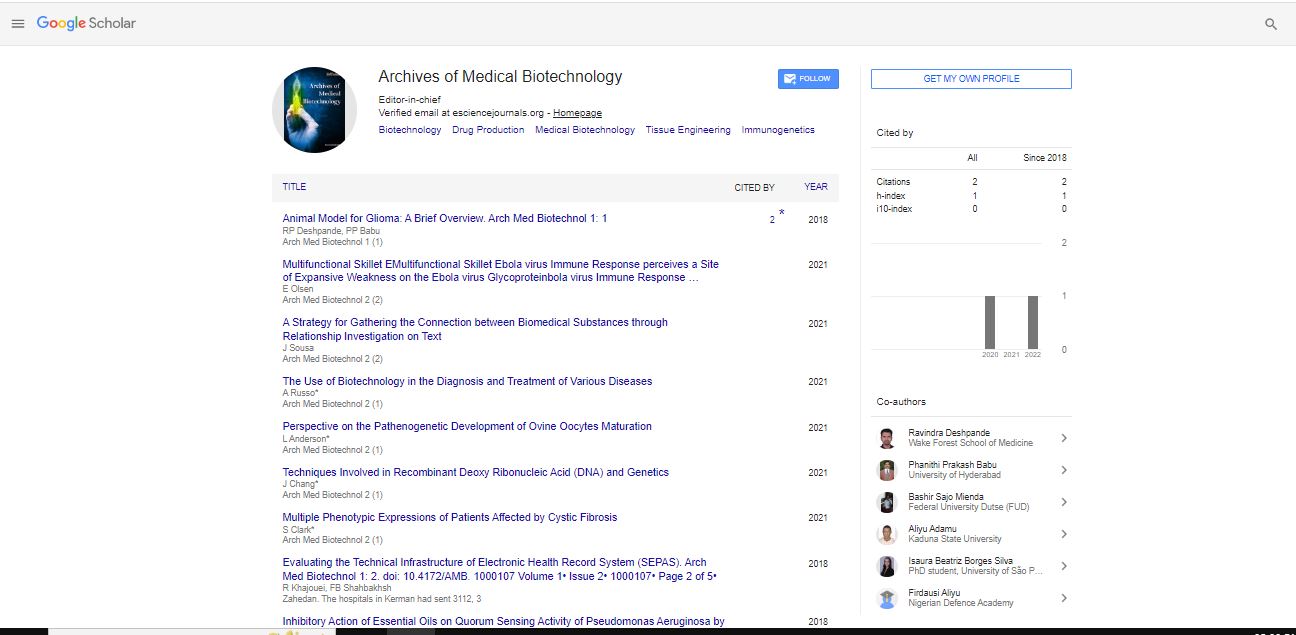Graphite filter-furnace with carbon thread atomizer and chemical modifiers for the electrothermal atomic absorption determination sn, pb, se and as in some of food, biological and environmentals
Alexander Zacharia
Odessa National University, Ukraine
: Arch Med Biotechnol
Abstract
According IUPAC recommendation there are several techniques may be used to reduce or eliminate analytical errors resulting from several of interferences in atomic emission (AES) and atomic absorption spectrophotometry (AAS) analysis, including so called the buffer-addition technique. Wherein, in analytical practice of electrothermal (ET) atomic absorption spectrophotometry these spectrochemical buffers, that named as chemical modifiers, are added to both the sample and reference solutions for the purpose of making the measure of the analyte less sensitive to variations in interferent concentration. Additives that may serve in ET AAS analytical practice as spectrochemical buffers are: suppressors, releasers, protective agents, volatilizers. This work are devoted to investigation of analytical effect some of chemical modifiers: Pd(NO3)2, Mg(NO3)2, NH4H2PO4 and their mixtures on the evaporation as well as atomization process for Ge, Sn, Sb and Bi at their direct ET AAS determination in some of materials with atomizer “graphite filter-furnace” (FF) and “carbon thread collector” (CTC) (fig.1). Differences of coefficient diffusion values and mass transporting through the porous graphite filter with carbon thread for high listed elements atom and interfering molecular vapor allowed toimprove analytical characteristics of a ET AAS method. It is possible that other atoms or molecules apart from elements absorbance or scatter radiation from the light source. These species could include unvaporized solvent droplets or components of the matrix (chemical species, such as anions that tend to accompany the metals being analyzed) that are not removed completely; this means that there is background absorption as well as that of the sample. One way of measuring and correcting this background absorption is to obtain separate signal of analyte from background signal. In this respect, the possibility of the graphite filter tube with carbon thread in the furnace atomizer with the Pd–Mg chemical modifier as effective tool for decrease or eliminate the drawbacks caused by the presence of the main mineral and organic components of biological liquids and other materials in the analyte solutions was examined.
Biography
Alexander Zacharia has completed his PhD at the age of 35 years from I.I.Mechnikov Odessa National University. He is the Director of Independent Analytical Chemistry Laboratory “CHEMTEST”, Member of Scientific Council (section on Analytical Chemistry) Ukrainian National Academy of Sciences, Member of Ukrainian Technical Committee TK122 –“ Gases, Liquid and Solids Analysis”. He is the Professor of Odessa National University. He has published more than 52 papers in reputed journals and has been serving as an editorial board member of repute.
E-mail: A191047@i.ua
 Spanish
Spanish  Chinese
Chinese  Russian
Russian  German
German  French
French  Japanese
Japanese  Portuguese
Portuguese  Hindi
Hindi 